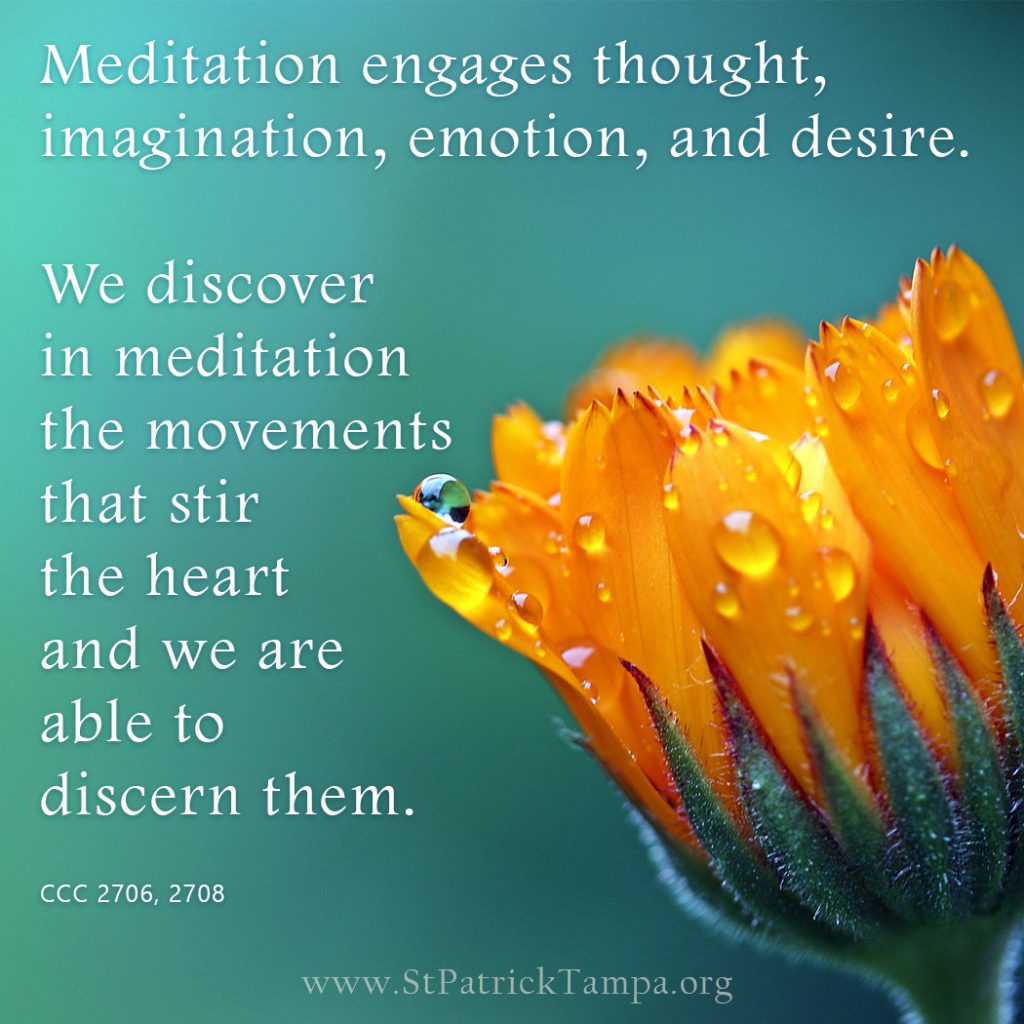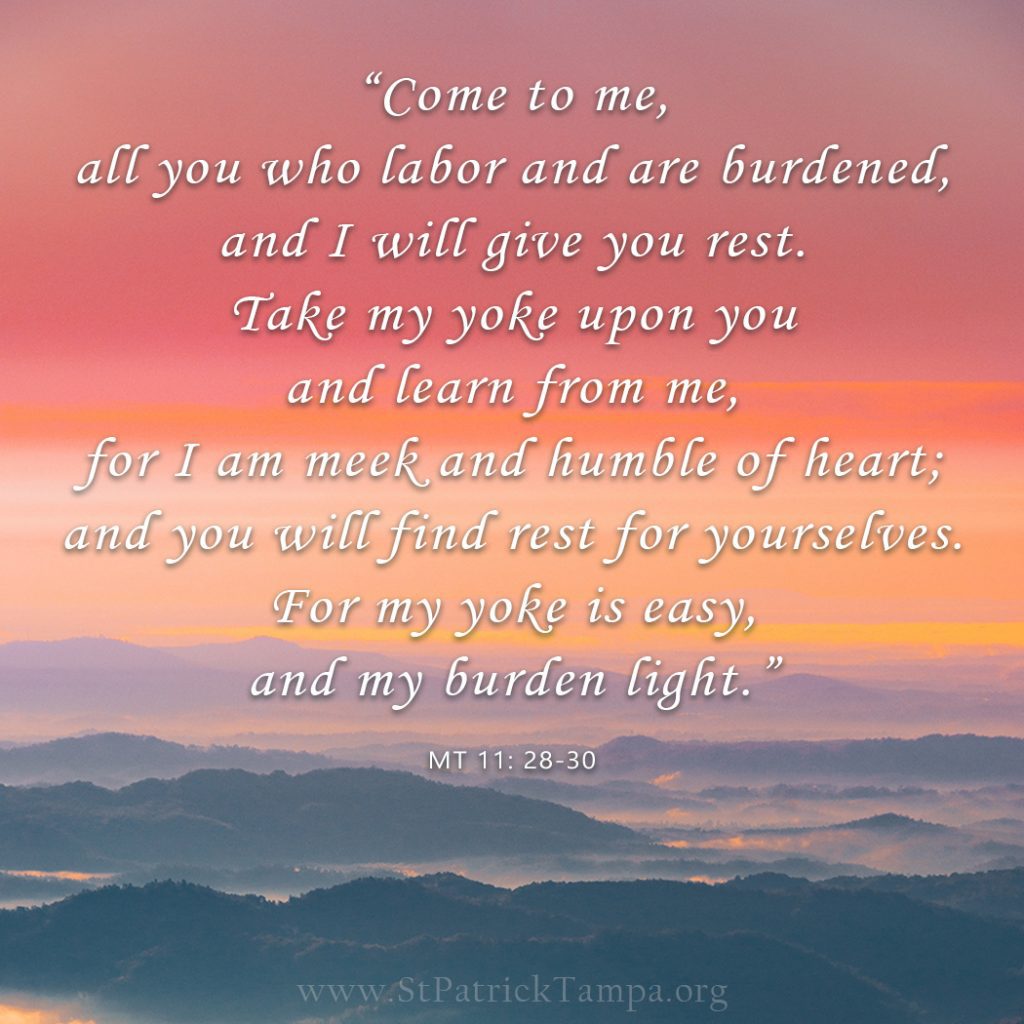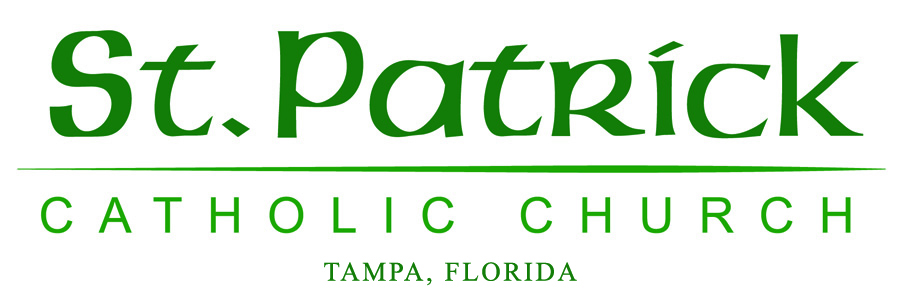
Join us as we continue our Summer Prayer and Meditation Series. We will continue learn more about and explore inspiring forms of Catholic prayer as given to us in the Catechism of the Catholic Church and expressed through the words of our Saints.
In the Catechism of the Catholic Church we find:
The Christian tradition comprises three major expressions of the life of prayer: vocal prayer, meditation, and contemplative prayer. They have in common the recollection of the heart.
Vocal prayer, founded on the union of body and soul in human nature, associates the body with the interior prayer of the heart, following Christ’s example of praying to his Father and teaching the Our Father to his disciples.
Meditation is a prayerful quest engaging thought, imagination, emotion, and desire. Its goal is to make our own in faith the subject considered, by confronting it with the reality of our own life.
Contemplative prayer is the simple expression of the mystery of prayer. It is a gaze of faith fixed on Jesus, an attentiveness to the Word of God, a silent love. It achieves real union with the prayer of Christ to the extent that it makes us share in his mystery. – CCC, no. 2720 – 2724
 Day 9 – Lectio Divina
Day 9 – Lectio Divina
The Latin phrase “lectio divina” may be translated as “divine reading.” Lectio divina is a method for praying with the Scriptures. As one reads and invites the Word to become a transforming lens that brings the events of daily living into focus, one can come to live more deeply and find the presence of God more readily in the events of each day. The method of lectio divina follows four steps: lectio (reading), meditatio (meditation), contemplatio (contemplation), and oratio (prayer).
“Lectio,” or “reading,” is the first step in the prayer process. The early monks understood that the fruitfulness of a monk’s prayer depends upon the simplicity, reverence, and openness to the Spirit with which the “reader” approaches the Word of God. The goal of this reading is not to rush through several chapters of Scripture. The reader, rather than trying to take in large sections of Scripture, adopts a reflective stance towards a short Scripture passage, pausing on a single word or phrase that resonates with the mind and heart.
This “reading” leads to the second step, known as “meditatio”—Latin for “meditation”— which invites one to reflect upon what was read. Ancient monks explained this process as a deep, unhurried thinking about the Word one has read—a rumination, somewhat like the way a cow chews the cud. As the Word is read in this step, the process of ruminating gradually draws the meditator’s focus from concerns of the mind to concerns of the heart.
The Word moves a person more deeply with the third step, which the ancients called “contemplatio” or “contemplation.” Contemplation is characterized by an openness of the heart, by which the reader experiences God as the One who prays within, who allows the person in contemplation to know the Word wordlessly and without image. By God’s grace, contemplatio gives one a unique ability to connect one’s newly discovered insights to daily life experiences, with the inspiration that comes from the Word of God and that has the gracious capacity to refresh the heart and mind.
The fourth and final step, “oratio,” meaning “oration” or “prayer,” invites one’s personal response to God. This response is dialogical and can be understood as “a conversation between friends,” as St. Teresa of Avila defined prayer. One takes the time to talk to God about what was read, heard, or experienced, or about the questions that have arisen in the depth of one’s being. This response can become transformative when one accepts the promptings of the Word toward an embrace of all that life now holds. One can find God in the ups and downs of life, in times of joy and pain, as well as in ordinary, everyday moments.
– USCCB, Ever Ancient, Ever New: The Art and Practice of Lectio Divina by Sr. Antoine Lawlor, IHM, DMin

Day 10
Meditation engages thought, imagination, emotion, and desire. This mobilization of faculties is necessary in order to deepen our convictions of faith, prompt the conversion of our heart, and strengthen our will to follow Christ. Christian prayer tries above all to meditate on the mysteries of Christ, as in lectio divina or the rosary. This form of prayerful reflection is of great value, but Christian prayer should go further: to the knowledge of the love of the Lord Jesus, to union with him.
To meditate on what we read helps us to make it our own by confronting it with ourselves. Here, another book is opened: the book of life. We pass from thoughts to reality. To the extent that we are humble and faithful, we discover in meditation the movements that stir the heart and we are able to discern them. It is a question of acting truthfully in order to come into the light: “Lord, what do you want me to do?”
– Catechism of the Catholic Church – CCC, nos. 2708, 2706

Day 11
We must meditate before, during and after everything we do. The prophet says: “I will pray, and then I will understand.” This is the way we can easily overcome the countless difficulties we have to face day after day, which, after all, are part of our work. In meditation we find the strength to bring Christ to birth in ourselves and in others. – Saint Charles Borromeo

Day 12
Scripture Meditation
“Come to me, all you who labor and are burdened,
and I will give you rest.
Take my yoke upon you and learn from me,
for I am meek and humble of heart;
and you will find rest for yourselves.
For my yoke is easy, and my burden light.”
-MT 11:28-30

Day 13 – Liturgy of the Hours
The reading from the Word of God at each Hour . . . and readings from the Fathers and spiritual masters at certain Hours, reveal more deeply the meaning of the mystery being celebrated, assist in understanding the psalms, and prepare for silent prayer. The lectio divina, where the Word of God is so read and meditated that it becomes prayer, is thus rooted in the liturgical celebration. – Catechism of the Catholic Church – CCC, nos. 1177




